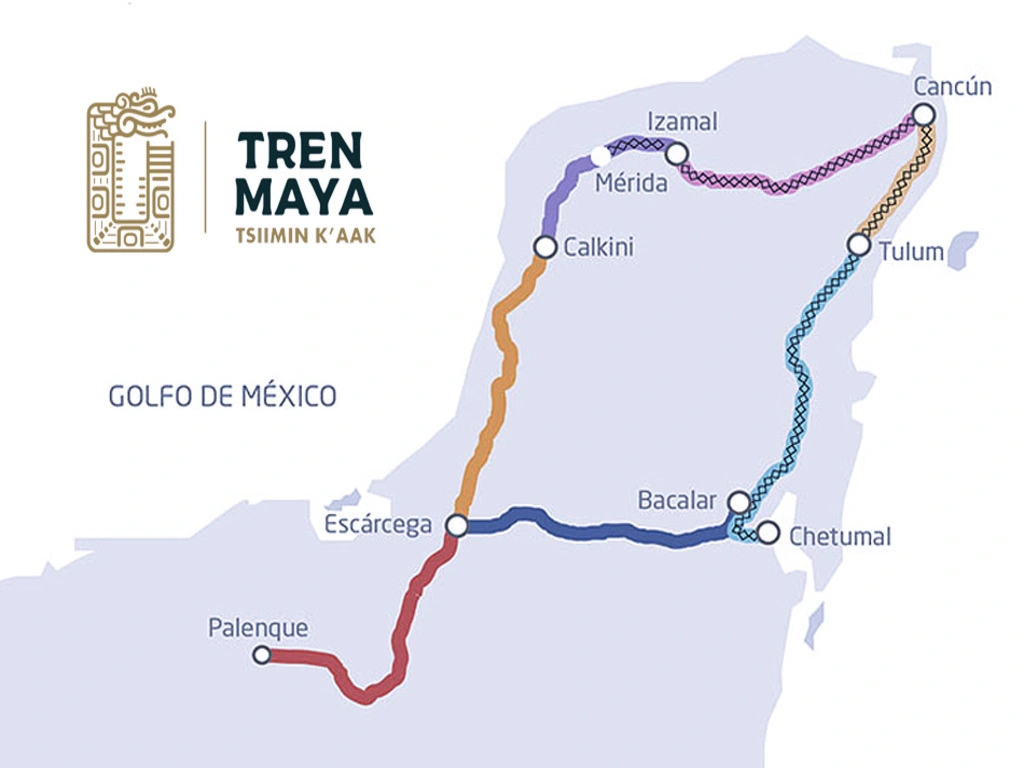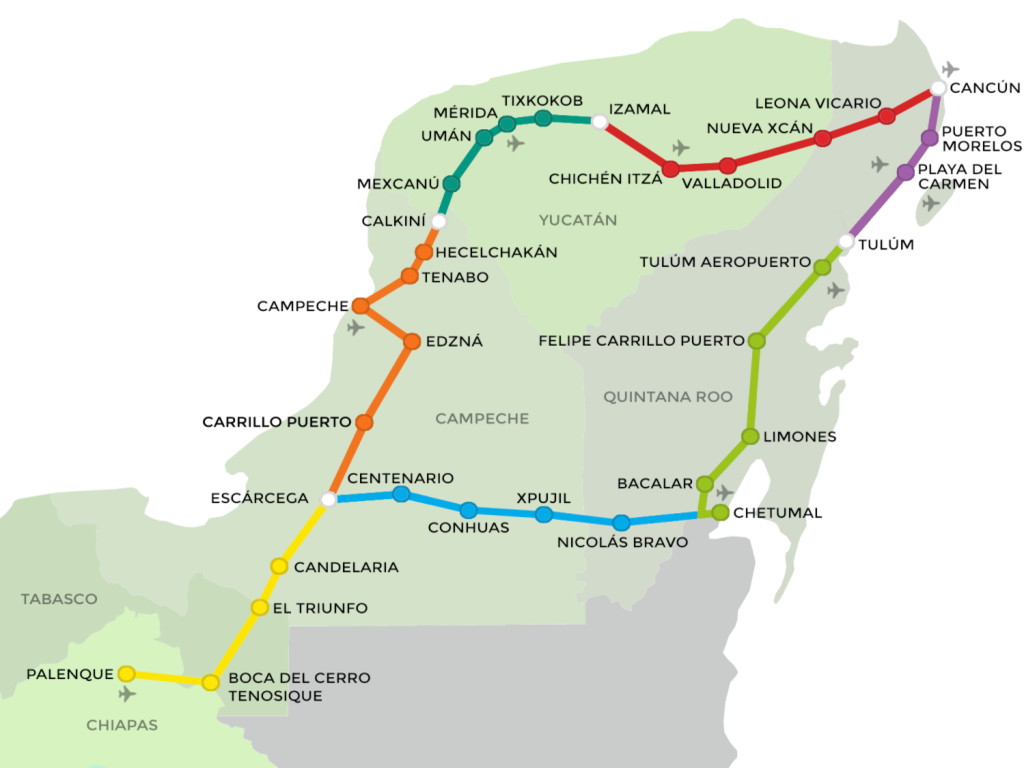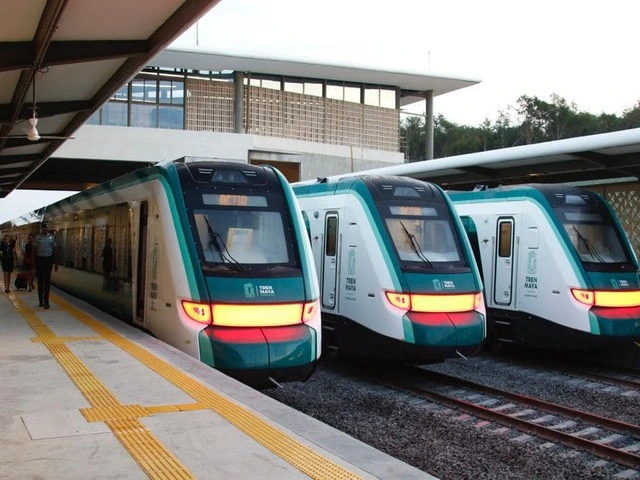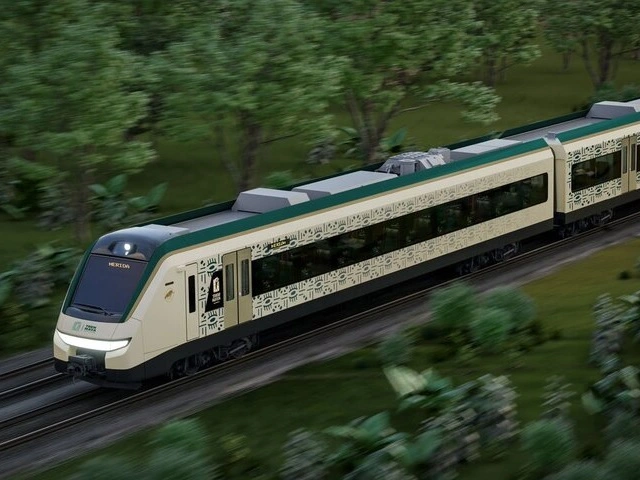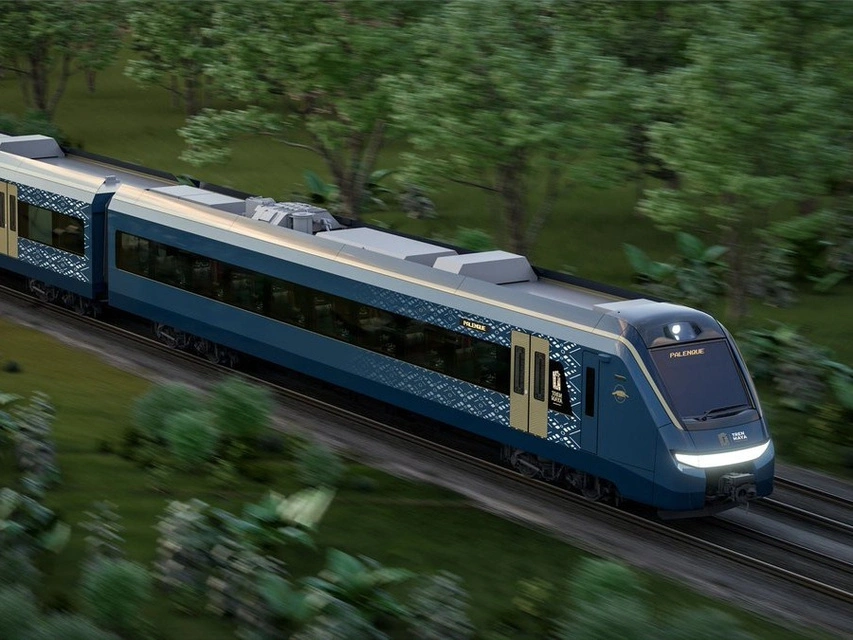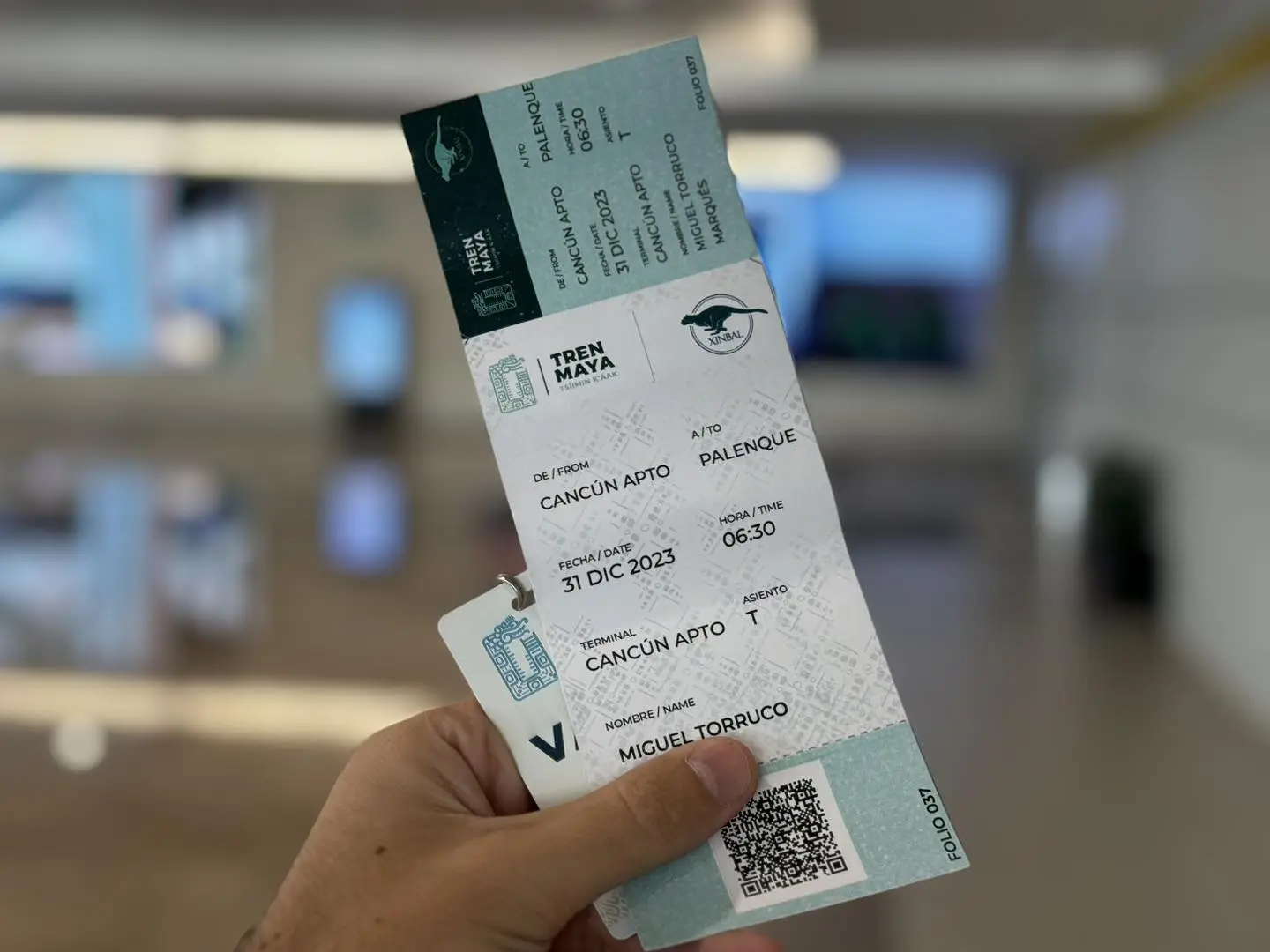
Maya Train, Route in México
Bejil u ‘ tiaá Tsíimin-K’áak ti’ Mexii’co’o
The route of the Tren Maya connects 5 states in the southeastern region of México with safe and modern trains through 966.27 miles (1,554 km) of railway tracks. The inauguration date of the Tren Maya was December 15, 2023, for one section. It is expected that by August 2024, all sections with their stations and stops will be operational.
Do you like cenotes? Discover those in Homún, Yucatán! There are more than 300 discovered cenotes, and you can visit over 30 of them.
Important news: On September 15, 2024, the Hotel Palenque Tren Maya will be inaugurated
What is the Tren Maya?
Ba’ax lé Tsíimin k’áak
The Mayan Train (Maya Train, Tren Maya, Tsíimin-K’áak or Fire Horse) is a new railway transportation service that connects 5 states in the southeastern region of Mexico, with 42 safe and modern trains. There are 3 train models: the Standard Mayan Train, the Mayan Train Restaurant, and the Mayan Train Long Distance.
The Tren Maya ruta interconnects the main cities, tourist areas, attractions, and archaeological sites primarily related to the Maya culture.
The Mayan Train provides service to local passengers, tourists, and freight transportation, with a maximum speed of 99.42 miles per hour (160 km/h).
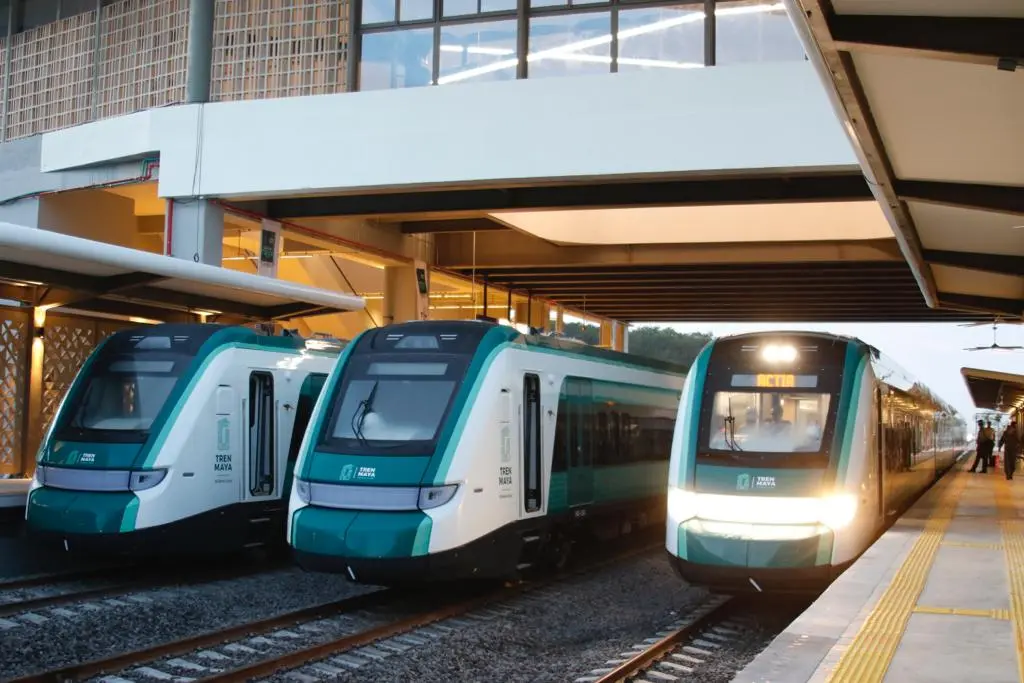
Olmec Culture
Are the first civilization in the Americas, given their antiquity of over 3,000 years, and they serve as a fundamental reference for understanding the Mayan civilization.
Mayan Culture
The Mayan civilization is renowned for its elaborate writing and numerical systems, as well as its use of calendars. They are also known for their impressive art and architecture.
What is the route of the Maya Train?
Makalmáak ú bejilo’o Tsíimin K’áak
The route of the Maya Train starts in Palenque Chiapas, and travels northeast towards Cancún Quintana Roo, through two routes that encircle the Yucatan Peninsula.
The Mayan Train route is divided into 7 sections that pass through the states of Campeche, Chiapas, Tabasco, Yucatán, and Quintana Roo in Mexico, covering a total of 966.27 miles (1,554 km).
There are 20 stations and 14 stops along the route of the Mayan Train.
How much does the ticket for the Tren Maya cost?
Buka’aj u’ to’ojo’o u’ ba’ax tu’ux Qe’en Na’akalo’o e’ Tsíimin K’áak
The prices vary depending on the station or boarding point on the Maya Train, as well as the class chosen in the Standard Train, which offers three options: Tourist, Premium and Local, each with different prices. There are two rates for nationals (people from Mexico) and foreigners. Additionally, local individuals (with identification from a state along the Maya Train route receive discounts only in the tourist class. Also, individuals with disabilities receive discounts.
These fare ranges vary from $10.00 dollars to $300.00 dollars.
The tren maya ticket price is per station or stop. Although it’s possible to get off before reaching your destination, the same ticket is no longer valid to continue the journey. You’ll need to purchase another ticket to continue traveling.
What are the States where the Tren Maya passes?
Makalmáako’o bi’i Noj tu’ux kú ma’am é Tsíimin K’áak o’o
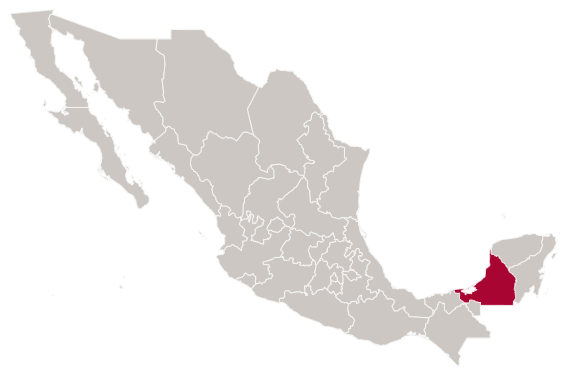
State of Campeche
Ideal for adventurers who enjoy stories of pirates, Mayan cities, walled forts, and colonial towns.
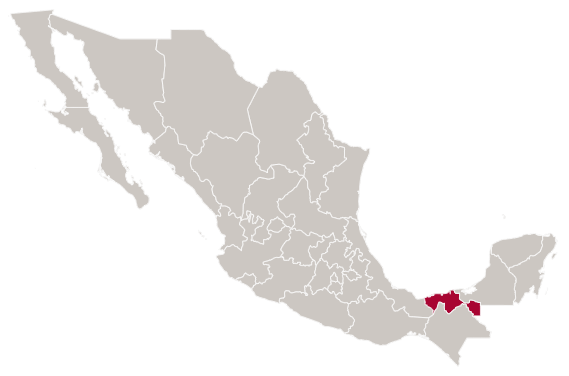
State of Tabasco
Home to the first civilization of the Americas, exotic landscapes, colossal Olmec heads, and cacao plantations.
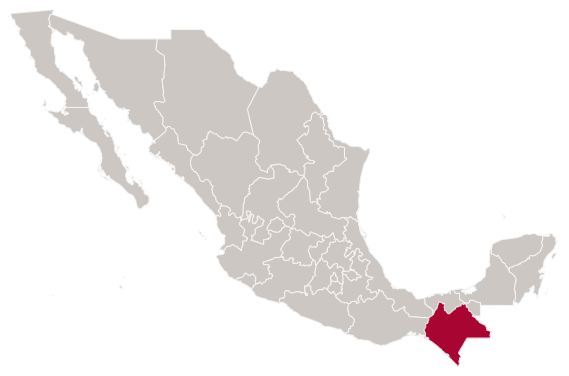
State of Chiapas
Jungles and forests that conceal spectacular secrets for travelers who dare to live the most incredible experiences.
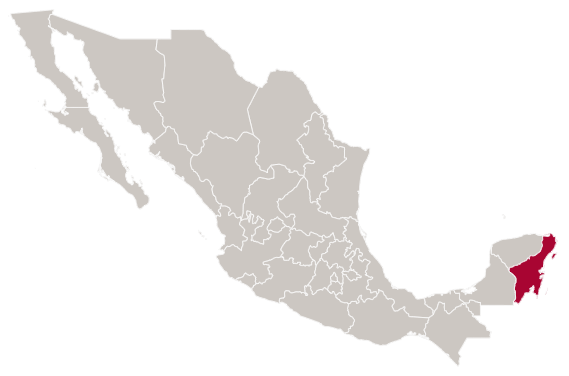
State of Quintana Roo
Symbol of the Sun and the Beach, the gateway to national and international tourism, with world-class infrastructure.
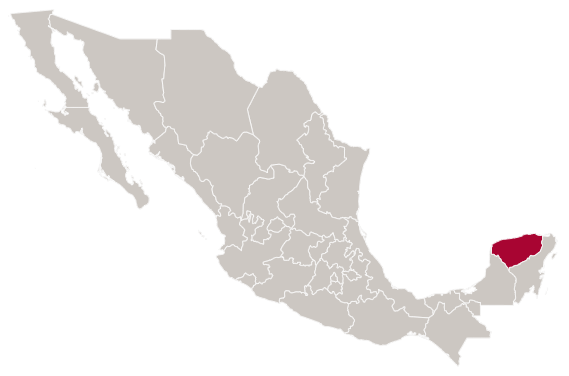
State of Yucatán
Fusion of the Maya culture and the New World. A state rich in tradition and nature, with gastronomy recognized as a World Heritage.
What are the stations along the Tren Maya Route by State?
Makalmáako’o bi’i tu’ux ku’ waaj ta’ Je’elel u’ bejil le Tsíimin K’áak tu’ Kajilo’o
There are 20 stations on the Mayan Train route:
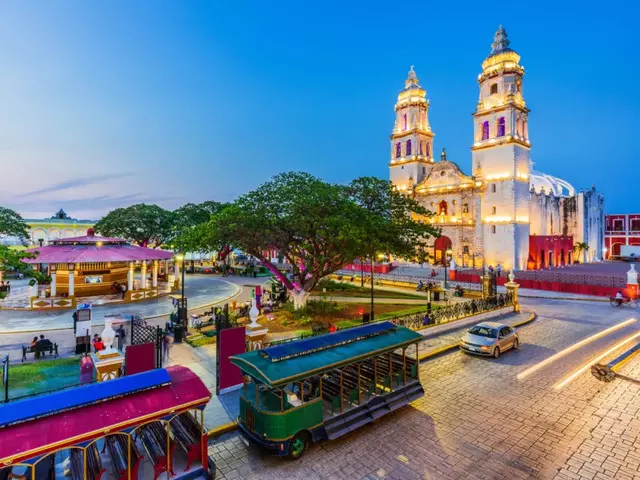
Mayan Train stations in Campeche
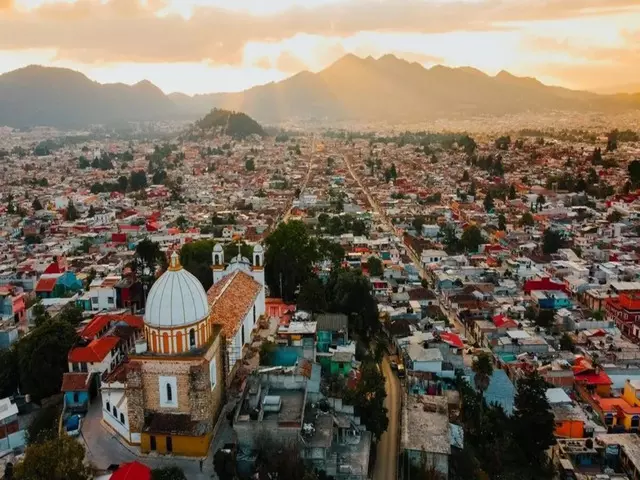
Mayan Train stations in Chiapas
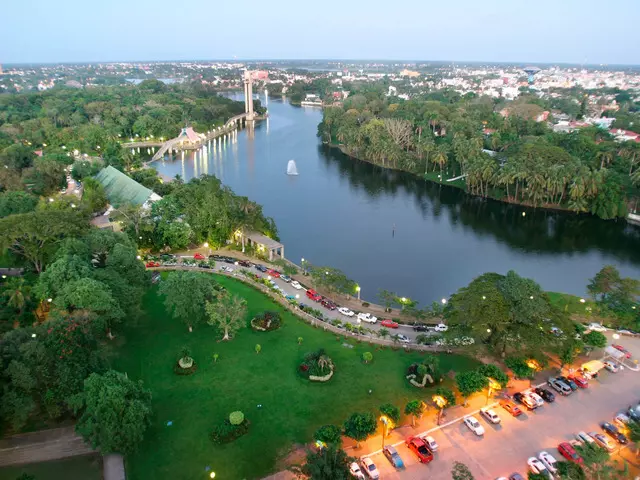
Mayan Train stations in Tabasco
- Boca del Cerro
- El Triunfo
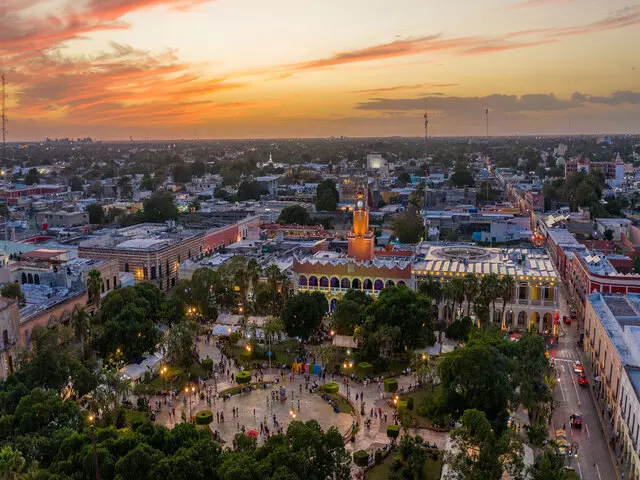
Mayan Train stations in Yucatán
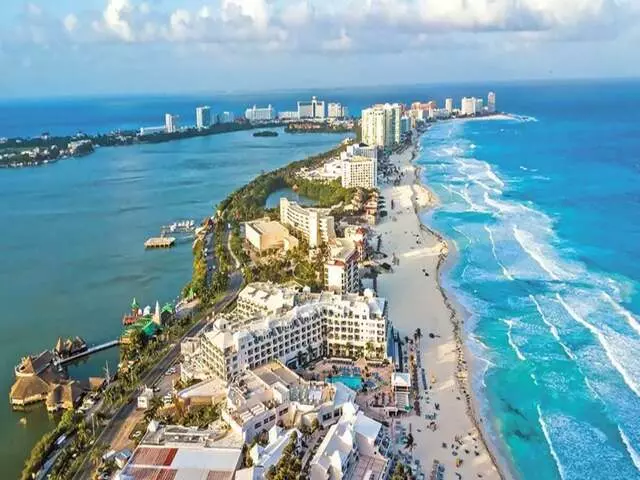
Mayan Train stations in Quintana Roo
- Nuevo Xcán
- Aeropuerto Cancún
- Puerto Morelos
- Playa del Carmen
- Tulum
- Aeropuerto Tulum
- Felipe Carrillo Puerto
- Bacalar
- Chetumal

Total number of Maya Train stations
There are 20 stations on the Mayan Train route.
What are the Stops along the Tren Maya route by state?
Makalmáako’o bi’i tu’ux ku waaj ta’ u bejil le Tsíimin K’áak tu’ kajilo’o
There are 14 Stops on the Maya Train route:
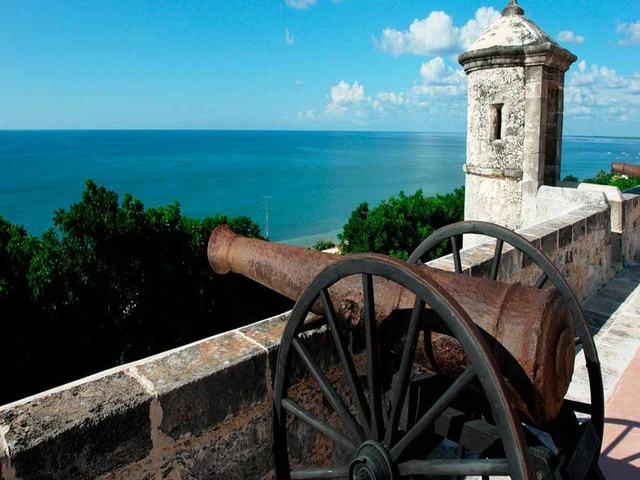
Mayan Train stops in Campeche
- Calkiní
- Calakmul
- Centenario
- Candelaria
- Tenabo
- Carrillo Puerto
- Hecelchakán
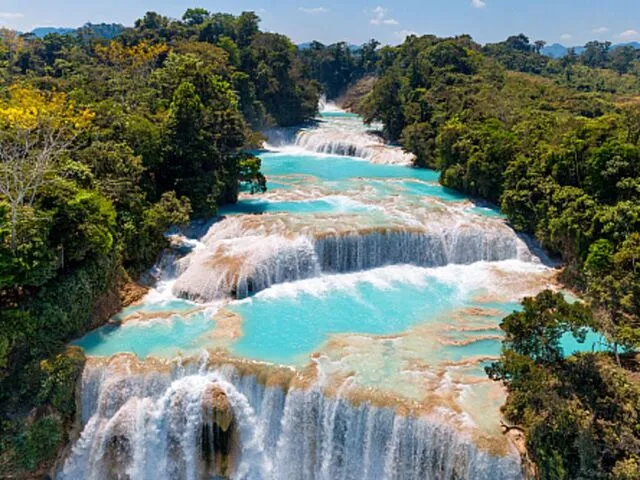
Mayan Train stops in Chiapas
- No Stop
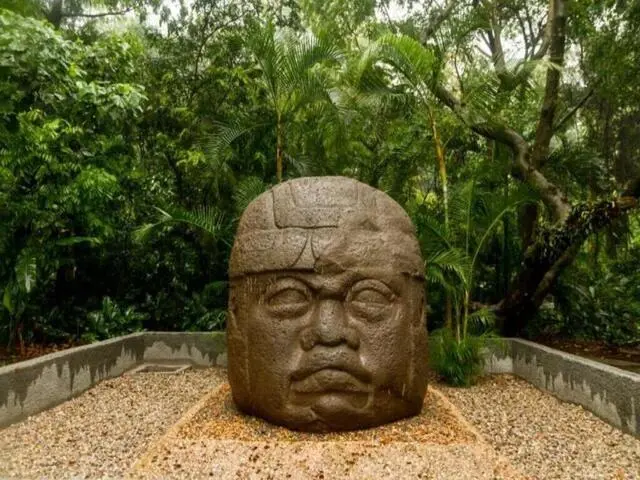
Mayan Train stops in Tabasco
- Tenosique
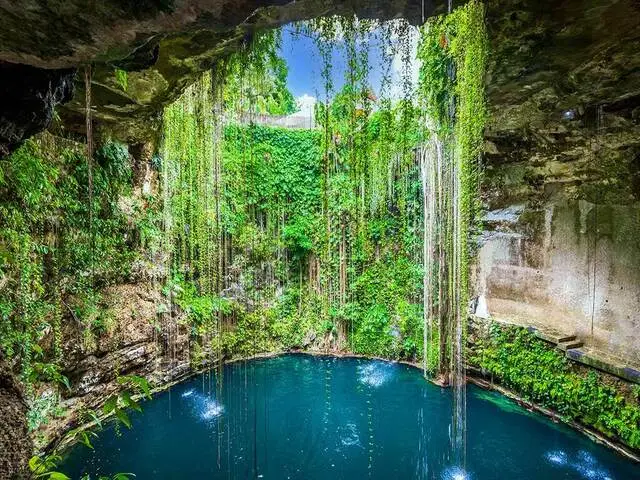
Mayan Train stops in Yucatán
- Maxcanú
- Tixkokob
- Umán
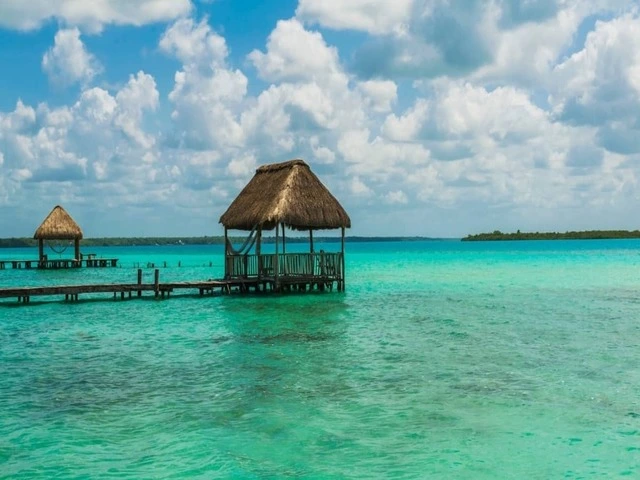
Mayan Train stops in Quintana Roo
- Nicolás Bravo
- Leona Vicario
- Limones
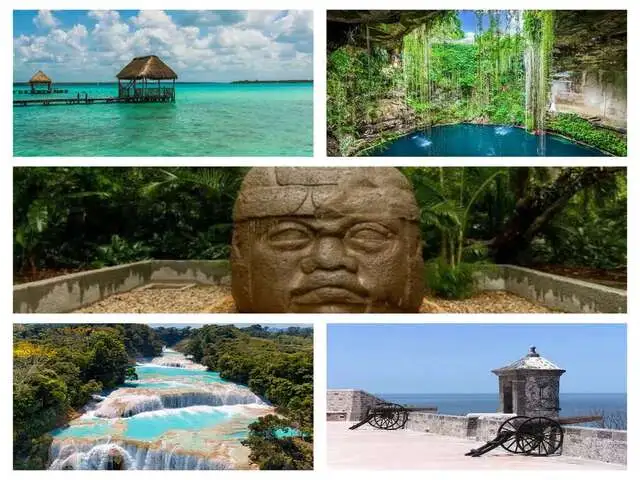
Total number of Maya Train stops
There are 14 stops on the Maya Train route.
Why travel on the Tren Maya route?
Ba’axten Qe’en bin ichi’ tu’ bejil le’ Tsíimin K’áak
Traveling on the Mayan Train provides the opportunity to immerse yourself in the history, culture, and natural beauty of the 5 states. Additionally, you can contribute to the sustainable development of the region and enjoy a comfortable and safe journey.
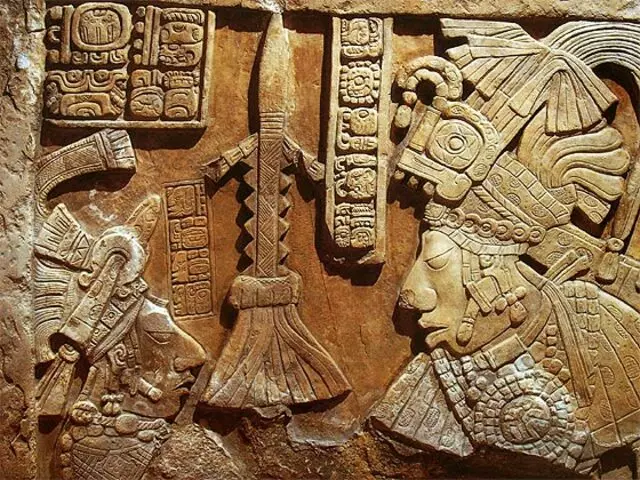
Discovering the Mayan culture
Exploring ancient Mayan cities such as Chichén Itzá, Tulum, Palenque and some of which are World Heritage sites.
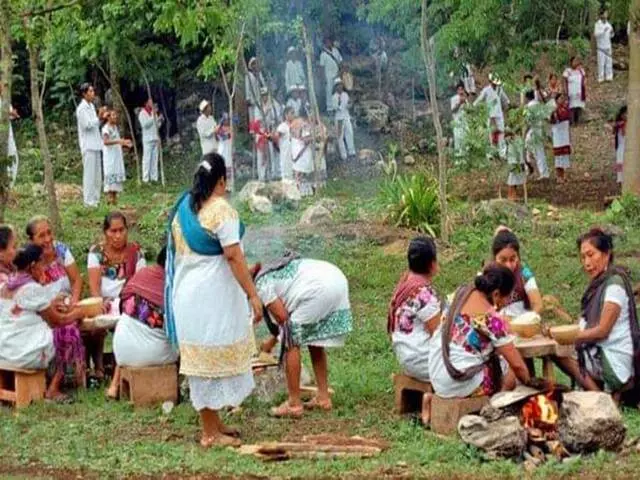
Connection with local communities
The Mayan Train provides the opportunity to interact with local communities, supporting sustainable tourism and contributing to their economic development.
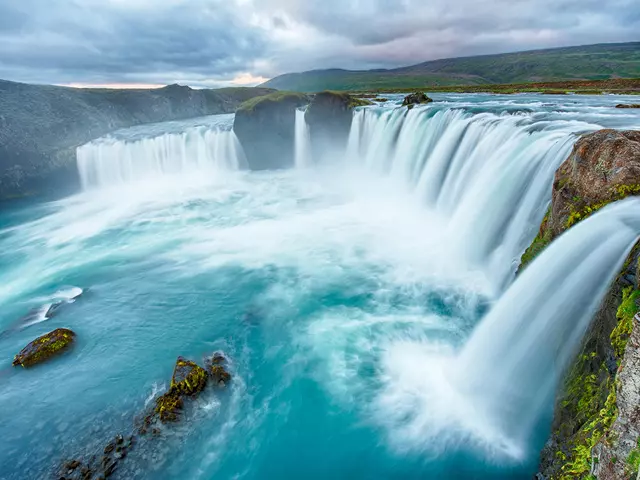
Connecting with nature
The Mayan Train passes through protected natural areas such as the Sian Ka’an Biosphere Reserve and the Lacandon Jungle.

Breathtaking landscapes
During the journey, you will be able to admire various landscapes, such as paradisiacal beaches, tropical jungles, rivers, and lagoons.
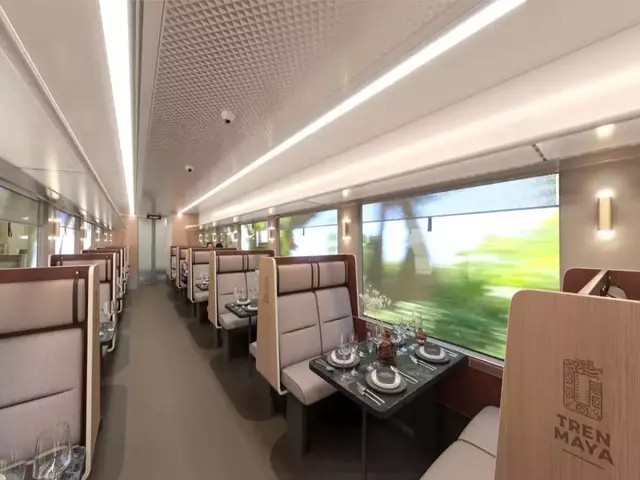
Comfort and convenience
Traveling by train is a comfortable and convenient way to get around the region and avoiding traffic.
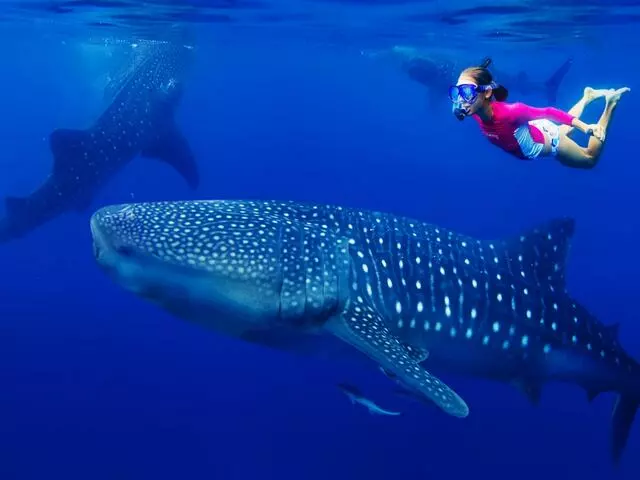
Sustainable tourism
The Mayan Train is committed to sustainable tourism, promoting responsible and environmentally-friendly practices that respect both the environment and the local communities.
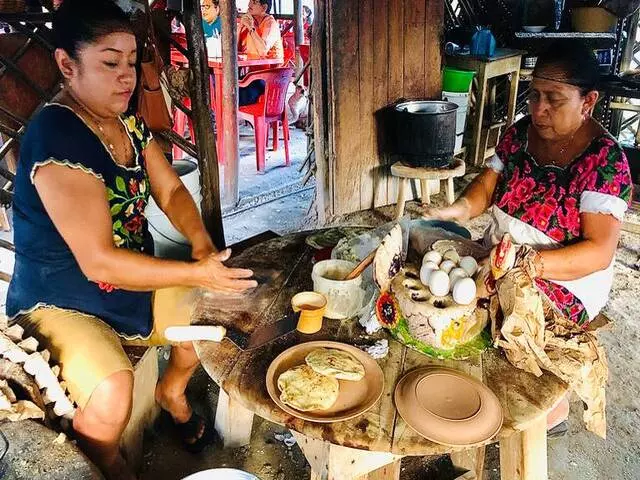
Regional gastronomy
Enjoy the delicious food and drinks of the region, such as Yucatecan dishes, chocolate, and traditional beverages.
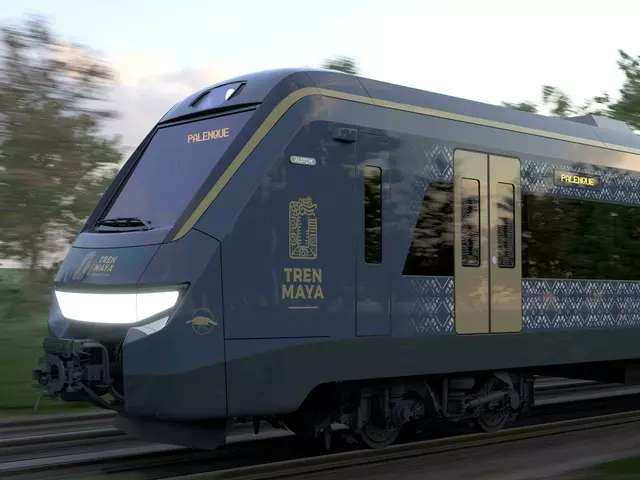
Safety
The Mayan Train is designed with high safety standards to provide travelers with a safe and reliable experience.
What will you find on the Tren Maya Route?
Ba’ax kaxtik ti’ u bejile’ Tsíimin K’áak
Throughout the Mayan Train, you will find a combination of cultural and historical destinations, archaeological sites, Magical Towns, unique gastronomy, handicrafts, World Heritage sites, and beautiful natural areas.
Each state along the Tren Maya route has its own unique attractions and charms, distinct from one another. Each state offers a unique experience for visitors.
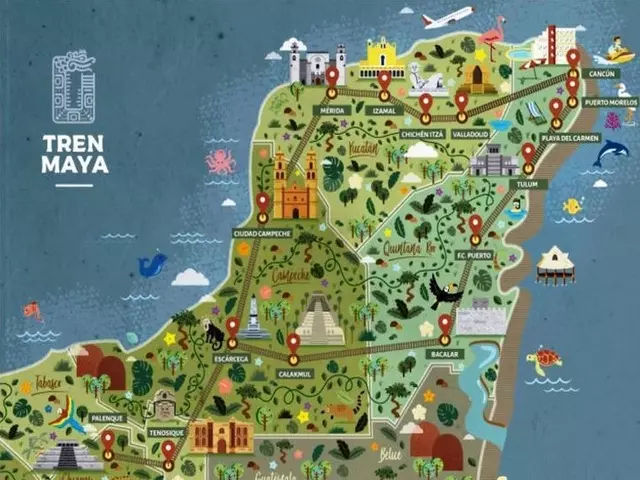
What are the Magical Towns along the Tren Maya Route?
Máakalmak le kaajilo’ob Ki’imak máako’ob ú bejil le’ Tsíimin K’áak
There are 23 Magical Towns (“Pueblos Mágicos”) along the Tren Maya route, named for their historical sites, archaeological sites, ecosystems, natural beauty, and cultural attractions.

Palizada
Palizada is known for its colonial architecture with houses and buildings made of wood and red tile roofs.

Comitán de Domínguez
Comitán de Domínguez is known for its rich historical and cultural heritage, as well as its natural beauty.
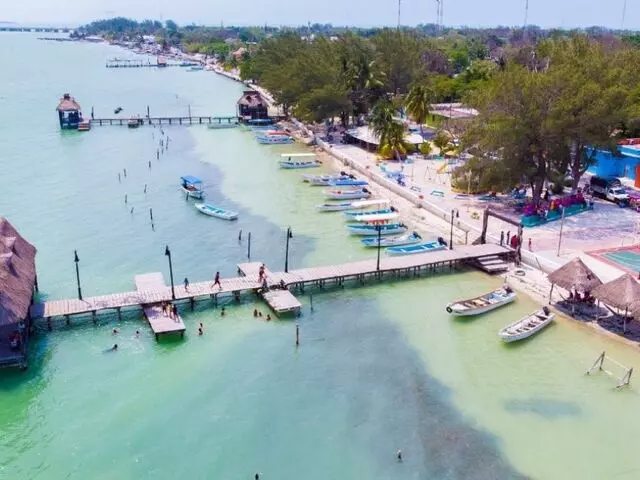
Isla Aguada
Isla Aguada is known for its food, white sandy beaches and crystal-clear waters, ideal for water sports.

Palenque
Palenque is famous for its impressive Mayan archaeological site, declared a World Heritage Site in 1987.

Chiapa de Corzo
Chiapa de Corzo is a town known for its colonial architecture and its significant historical and cultural heritage.

San Cristóbal de las Casas
San Cristóbal de las Casas is known for its history, colonial architecture, as well as its cultural and artistic heritage.
Tren Maya Hotels
Nukuch ka’anal najo’ob u’ tza’ le’ Tsíimin K’áak
The Mayan Train also includes Mayan Train Hotels along the route, located near the archaeological sites and natural areas.
There are 6 Mayan Train Hotels:
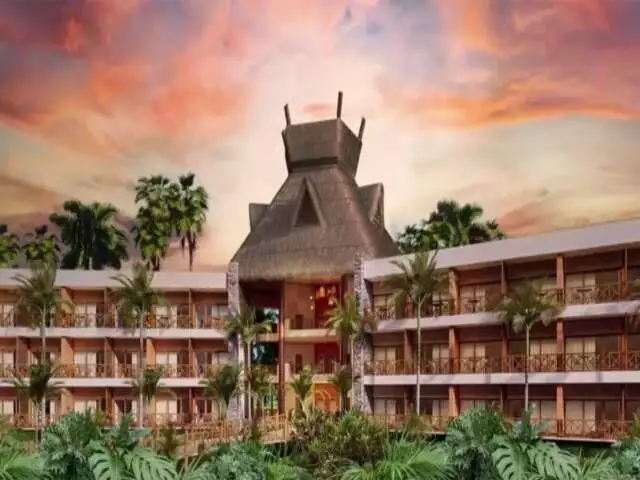
How many archaeological sites are there on the Tren Maya route?
Jayp’éel lu’umo’. lelo’oba’ Ch’íijilo’ob yaan tu bejil le’ Tsíimin K’áak
Mexico is internationally renowned for its extraordinary archaeological wealth. Throughout its territory, numerous archaeological sites can be found that bear witness to the grandeur and diversity of the ancient civilizations that inhabited the region.
The Tren Maya encompasses ancient civilizations such as the Olmec and the Maya, each with its own historical and architectural legacy. There are more than 65 archaeological sites to visit along the Tren Maya route, and some of them have been declared UNESCO World Heritage Sites.

Airports on the Tren Maya Route
Makalmáak u’ bejiil Tsíimin K’áak tu’ux yaan le Ch’íich’o’ Xik’nal
Visitors from Mexico and around the world will arrive at the Tren Maya from various airports. There are 7 International Airports along the Maya Route:
- Cancún, Quintana Roo: In terms of distance, it favors reaching Playa del Carmen, Cozumel, Isla Mujeres, Holbox, and Cancún.
- Tulum, Quintana Roo: It facilitates reaching Tulum, Akumal, Mahahual, Bacalar, Coba, and Felipe Carrillo Puerto. NEW 2023
- Chetumal, Quintana Roo
- Mérida, Yucatán
- Campeche
- Ciudad del Carmen, Campeche
- Palenque, Chiapas

World Heritage Sites on the Tren Maya route
Je’ela’ le máako’ob tu’ bejil le’ Tsíimin K’áak
These are some of the sites recognized by UNESCO on the Mayan Train route:
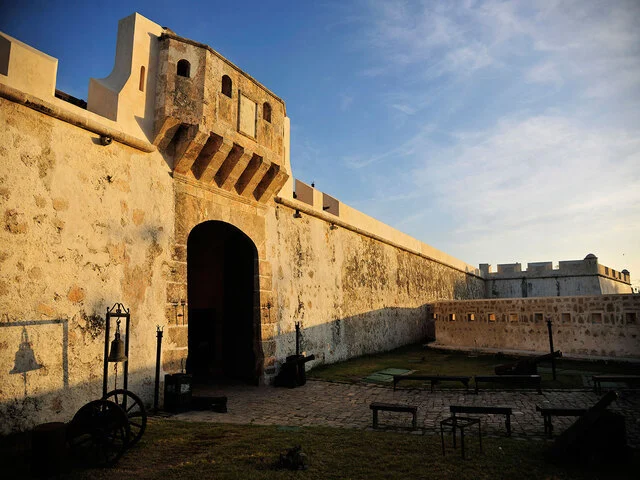
CAMPECHE
Fortified Historic City of Campeche
It was declared a World Heritage Site in 1999. San Francisco de Campeche preserves an exceptional colonial architectural ensemble.
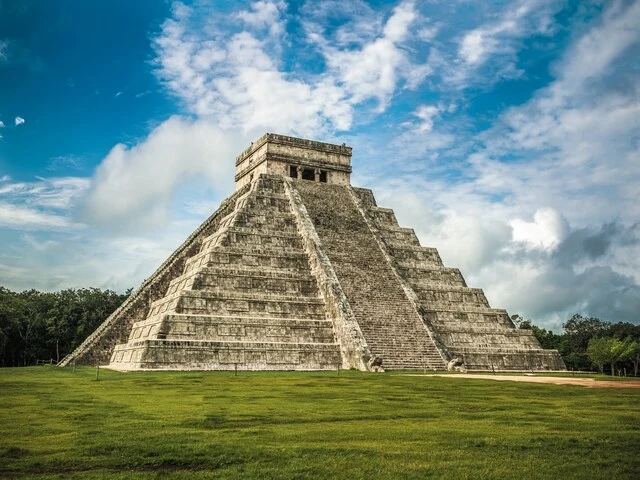
YUCATÁN
Pre-Hispanic City of Chichen Itza
Declared a World Heritage Site in 1988, Chichén Itzá is one of the most visited archaeological sites in Mexico, known for its iconic stepped pyramid, El Castillo, and other impressive Maya structures.

CHIAPAS
Designated as a World Heritage Site in 1987, is famous for its impressive Maya temples and structures, as well as its elaborate sculptures.
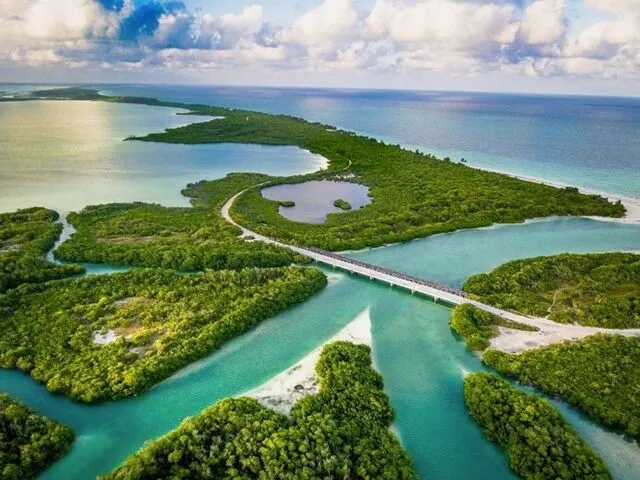
QUINTANA ROO
Sian Ka’an Biosphere Reserve
Designated as a World Heritage Site in 1987, this reserve is a protected area that encompasses jungles, mangroves, coral reefs, and a wide diversity of flora and fauna.
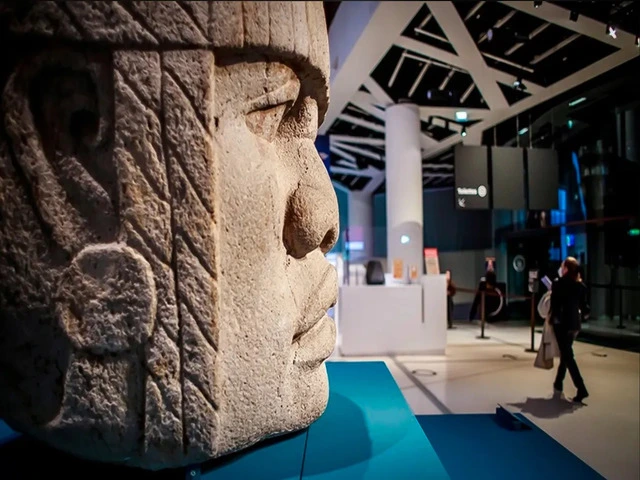
TABASCO
Does not have
However, that doesn’t mean it lacks significant cultural and natural attractions. Tabasco is the birthplace of the “Mother Culture,” the Olmec culture that predates the Maya civilization.
Protected natural areas in the Tren Maya Route
Ti’ ku yúuchul waaj Ku kanáanta’a tu bejil le’ Tsíimin K’áak
Some of the reserves and natural parks in the Tren Maya route are:
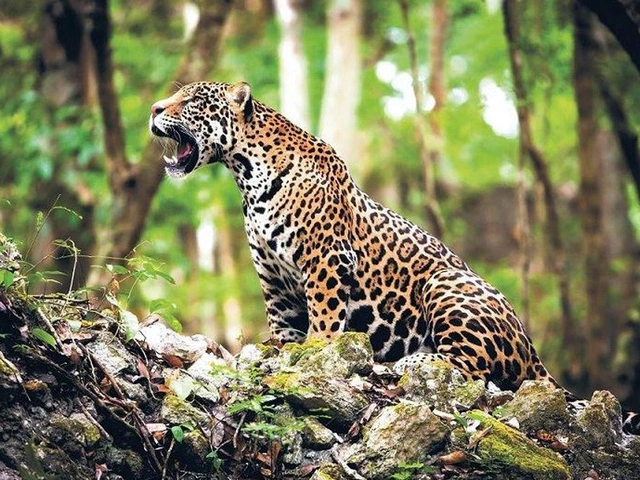
CAMPECHE
Calakmul Biosphere Reserve
It is a vast protected area that harbors a great diversity of species and ecosystems, including tropical rainforests, Maya archaeological sites, and a wealth of flora and fauna.
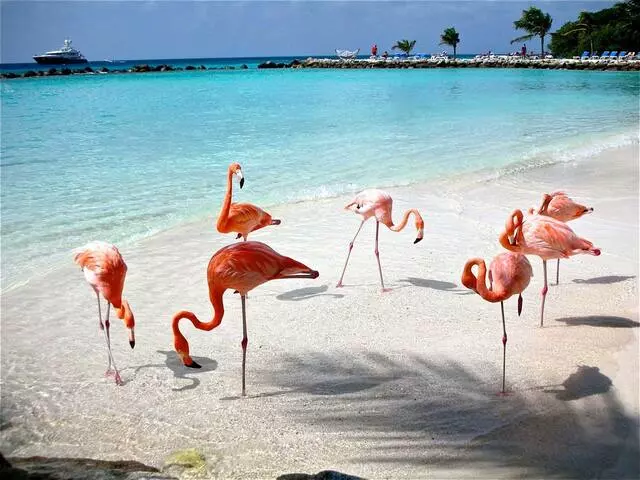
YUCATÁN
Celestun Biosphere Reserve
It is located on the northern coast of Yucatán and is a crucial habitat for pink flamingos, as well as other species of water birds and marine life.
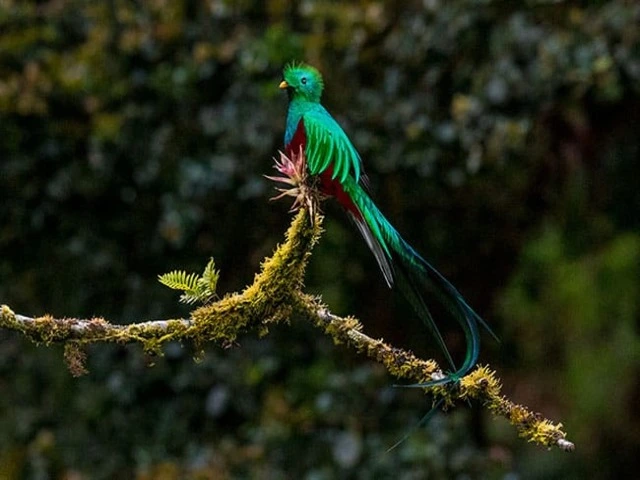
CHIAPAS
El Triunfo Biosphere Reserve
It is one of the most important protected natural areas in Mexico, harboring a great biodiversity, including endemic and endangered species, as well as cloud forests and paramos.
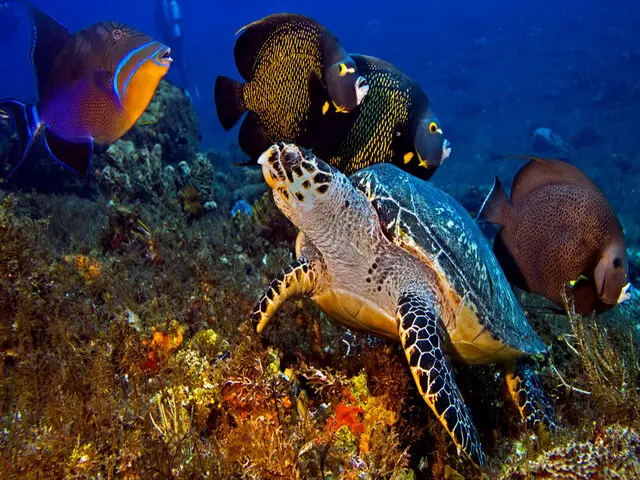
QUINTANA ROO
Cozumel Reefs National Park
This park protects the coral reefs surrounding the island of Cozumel and is a popular destination for diving and snorkeling due to its stunning coral formations and marine life.
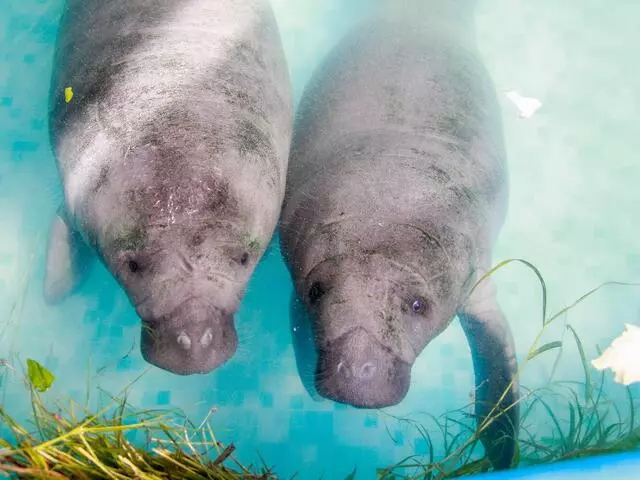
TABASCO
Laguna de las Ilusiones National Park
Located in Villahermosa, the capital of Tabasco, the park protects a body of water that harbors a great diversity of water birds and wildlife.
The Tren Maya Guidebook
Na’akake’ yaak’il Tsíimin K’áak
During the Journey along the Tren Maya Route, you will have the opportunity to learn the Maya language, uncover legends and traditions, explore the latest updates, and experience all the tourist, economic, and cultural attractions of the Maya Route.


App
Download the application where you will find all the attractions of the Mayan Train Route.
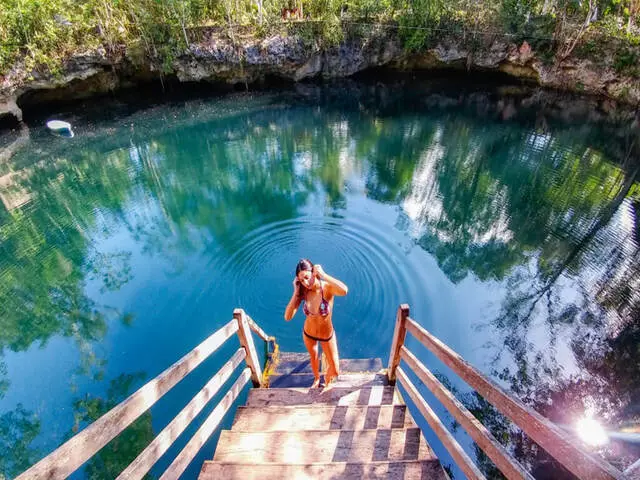
Tours
Discover the best tours for an enhanced travel experience on your journey along the Mayan Train Route.
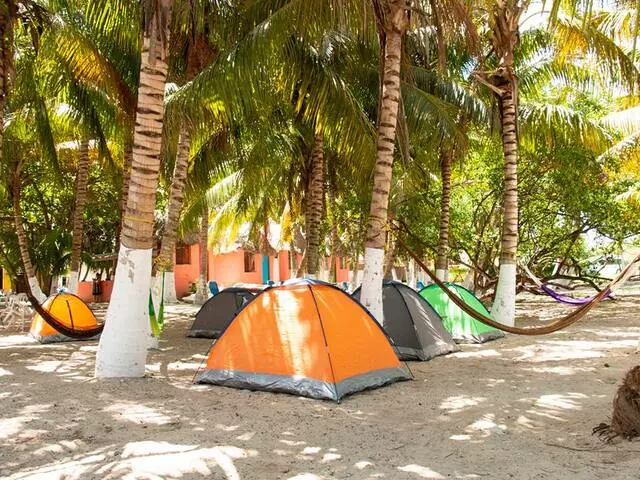
Hotels
Find the ideal hotel or accommodation to relax during your journey along the Mayan Train Route.

